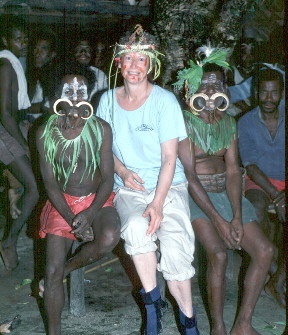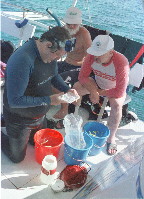
Kalinga ornata
Kalinga ornata (Alder & Hancock, 1864)
Kalinga ornata has been known for a long time. It was originally described by Alder and Hancock from Coromandel, India. It has been found sporadically from isolated localities ranging from South Africa to the Hawaiian Islands. It is usually an inhabitant of subtidal waters. I have seen records from 16-36 meters depth. It has been beautifully illustrated in the suppplement to Kikutaro Baba's Opisthobranchs of Sagami Bay and photos of the animals appear in Willan and Coleman and in Kay and Schoenberg's Hawaiian shell book.
Little is known about its biology. It is much broader than the phanerobranch dorids to which it is most closely related (things like Plocamopherus and Kaloplocamus). This probably accounts for some of its "alien" appearance. Virtually nothing is known about its biology. Mary Jane's observations that it is nocturnal and burrows in the sand explain why it has not been seen very often. Its behavior of probing the bottom and everting its mouth is very curious. Its relatives all feed on bryozoans, but what it is doing is very mysterious. Its broad body and wide oral veil are convergent with notaspideans that inhabit the same region, things like Pleurobranchaea brockii and Euselonops luniceps. It sure looks like a macro-predator, but we obviously lack the information to say this conclusively. It is a really amazing beast!
Photo courtesy of Mary Jane Adams of Arcadia, California:

Send Mary Jane mail at divepng@yahoo.com |
Taxonomic information courtesy of:

California Academy of Sciences Send Terry mail at tgosliner@calacademy.org |
